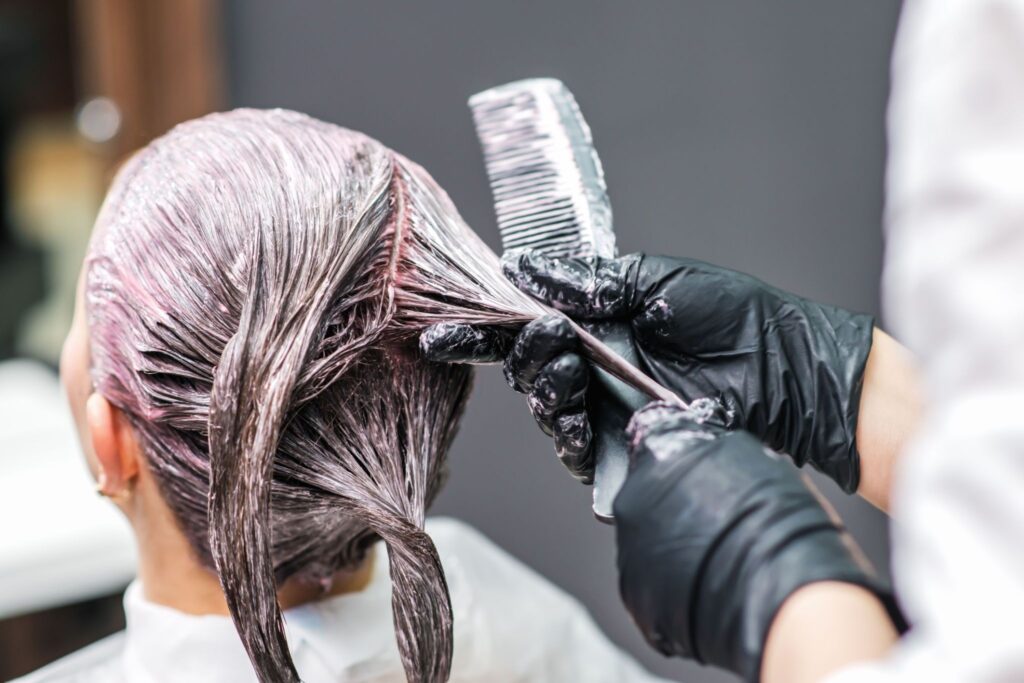Table Of Content

Staying away from water can give your newly dyed strands their best chance of remaining vibrant. "I recommend clients give their hair two to three days to let their new color truly set in," says Pineda. While washing your hair the next day doesn't necessarily do any harm to your hair or color, waiting it out may offer an added boost for longer hold. "It allows the hair cuticle more time to close and lock in those beautiful, newly added tones," adds Debski, who advises her clients to hold off from their first rinse for at least a full 24 hours.
Should You Wash Your Hair Before Dyeing It?
Cutting your hair is the only solution at the end of the day, to get your hair healthy again. These barriers, when not removed beforehand, have the potential to prevent your color from evenly dispersing and penetrating into the hair shafts. "Color penetrates hair the best when it doesn’t have any obstructions it has to force itself through," Debski says. Instead of expecting products to work harder to break through those extra barriers, rely on clean strands to give you the best output.
Protect your hair color in the winter with these essential tips
Professional-grade dyes often have better staying power compared to drugstore brands. How often to color hair will depend on factors such as your hair’s health, texture, and the desired level of lightness. It’s essential to consult with a professional hairstylist who can assess your hair’s condition and recommend the ideal timeline for your specific needs. If a sun-kissed hair color is what you’re after, then reach for this at-home hair color kit, which comes with a touch applicator. The non-drip creme (which helps protect hair as it colors) comes in a variety of shades so that you can easily find your best match.
How to care for your color treated hair
15 Best Shampoos for Colored Hair in 2024 - ELLE
15 Best Shampoos for Colored Hair in 2024.
Posted: Tue, 21 Nov 2023 08:00:00 GMT [source]
To keep your new color fresh, aim for touch-ups every 3 to 4 weeks if you wash your hair frequently. Limit the use of harsh chemical treatments like bleaching or perming, as they can weaken and fade the color. Incorporate deep conditioning treatments into your routine to keep your hair hydrated and healthy.
Demi-permanent dye deposits color, and it cannot lift hair color, Spearmen explains. But the peroxide is what allows it to penetrate your hair shaft, in contrast to semi-permanent dye, which essentially “sits” on top your cuticle. “A semi-permanent hair dye can be done every week, since it does not penetrate your hair,” Mitchell notes. That’s because semi-permanent dye uses gentler chemicals and runs a lower risk of damaging hair follicles. If your hair is robust and you’re using semi-permanent dye, you can probably use it a bit less often than every four weeks. A visit using semi or demi-permanent dye is much gentler on hair and leads to damage less often.
Ultimately, the good news is that there are safe practices for keeping your hair color fresh regularly, and those time frames vary based on your goals. Hair texture plays a role in how much dye the follicles can handle. Some people can seemingly dye their hair over and over again without a change in their hair health. Others notice that their hair gets dry, brittle, and may even fall out without the proper maintenance. But before you rush out and change the color of your hair, you should think twice about doing it too much. “The image on the box shows the result when the color is applied to pure, not previously colored and is usually heavily retouched or even computer-generated.
Top tips for caring for dyed hair
However, it’s important to read the instructions before applying so you don’t end up with any stains. All of these processes involve lightening or “lifting” the hair. You can do this with bleach or high-lift tint, depending on your base hair color and desired outcome. Generally speaking, experts recommend anywhere around four to eight weeks between coloring, given that proper care and maintenance is taken to ensure hair is protected from damage.
How Long Does Temporary and Semi-Permanent Hair Dye Last?

The shorter the time between dyes, the more damage you are going to do to your hair. Dyed hair requires special color-safe shampoos and conditioners to keep your shade looking vibrant, not faded. “First, don’t over-cleanse—lathering once is sufficient—especially if you shampoo daily,” says Minardi.
Protein Treatments For Hair: All The Benefits And How To Use Them - Women's Health
Protein Treatments For Hair: All The Benefits And How To Use Them.
Posted: Thu, 31 Aug 2023 07:00:00 GMT [source]
Again, how often you dye your hair will depend on how far your desired color is from your natural hair and whether you want to cover grays. If you prefer your color to start right at the root, a good rule of thumb is to get it touched up every six to eight weeks. If you’re using box dye, we recommend looking for a formula that contains nourishing ingredients too. One of our favorites is the Garnier Nutrisse Ultra Créme, which is formulated with five conditioning fruit oils to help maintain the health of your hair. The frequency of hair dyeing depends on various factors, including the type of dye, your hair’s condition, and desired results. Generally, it’s recommended to wait three to six weeks between dyeing sessions to minimize damage and maintain hair health.
It’s always better to play it safe and do what you need to protect your hair and scalp. At the most, you shouldn’t repeat a complete dye job more than every eight weeks. Avoiding over-dying your hair will prevent the most significant damage to your hair. A simple tonal change, on the other hand, can be done every couple of weeks. Because of this, you should avoid recoloring your hair too frequently. Thankfully, if you need to make some minor changes, much safer and gentler options are available.
Light hair has less obvious root regrowth and blends more subtly with grey. There are conditioning treatments that can help fortify your strands and lessen the amount of damage that coloring can do. Permanent dyes, on the other hand, should only be used every four to six weeks to avoid damaging your hair. Here’s a great film by a professional colorist that breaks it down for you how often is safe to color your hair.



